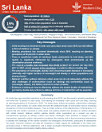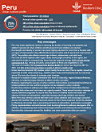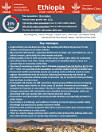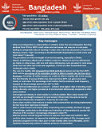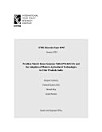Resilient Cities urban nutrition profile: Philippines
Margolies, Amy · Pather, Kamara · Namara, Rebecca · Sehgal, Mrignyani · San Valentin, Carleneth · Olney, Deanna
Apr 2025 · Intl Food Policy Res Inst
Ebook
12
Pages
family_home
Eligible
info
reportRatings and reviews aren’t verified Learn More
About this ebook
Child stunting is a persistent problem in the Philippines. While stunting prevalence is higher in rural than in urban areas, it still affects one in four children under the age of five in urban areas and coexists with rising overweight in school-age children, adolescents, and adults. Some urban nutrition interventions have focused on reducing diet-related noncommunicable disease (NCD) risks, but they have not addressed the challenges of the double burden of malnutrition (DBM) (e.g., the coexistence of problems of undernutrition and overnutrition) in school-age children and adolescents. Likewise, the lack of evidence on interventions in the urban food environment (FE) signals a need for studies to better understand the role of FEs in driving unhealthy dietary changes and the DBM and to test approaches to shift consumption patterns toward healthier diets and lifestyles. NCDs are the leading cause of mortality in the Philippines, and NCD risks are higher in urban areas than rural ones. National policies support nutrition with multisectoral approaches, particularly through urban farming and gardening to promote healthy and affordable urban diets. Yet the urban-specific programs must be evaluated. Evaluations of urban agricultural initiatives are needed to document any impact on diets and nutrition and to assess the potential for scale up, especially given land scarcity in dense urban areas. Additionally, multisectoral double-duty actions must be developed to address all forms of malnutrition.
Rate this ebook
Tell us what you think.
Reading information
Smartphones and tablets
Install the Google Play Books app for Android and iPad/iPhone. It syncs automatically with your account and allows you to read online or offline wherever you are.
Laptops and computers
You can listen to audiobooks purchased on Google Play using your computer's web browser.
eReaders and other devices
To read on e-ink devices like Kobo eReaders, you'll need to download a file and transfer it to your device. Follow the detailed Help Center instructions to transfer the files to supported eReaders.

